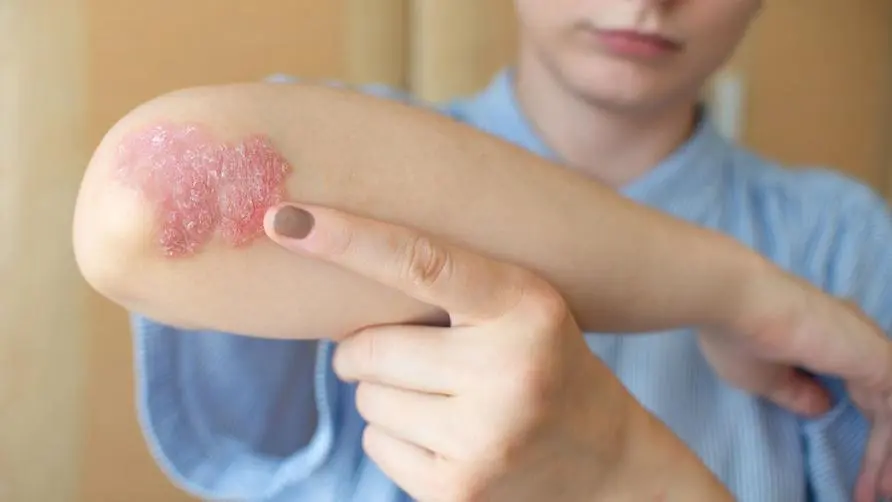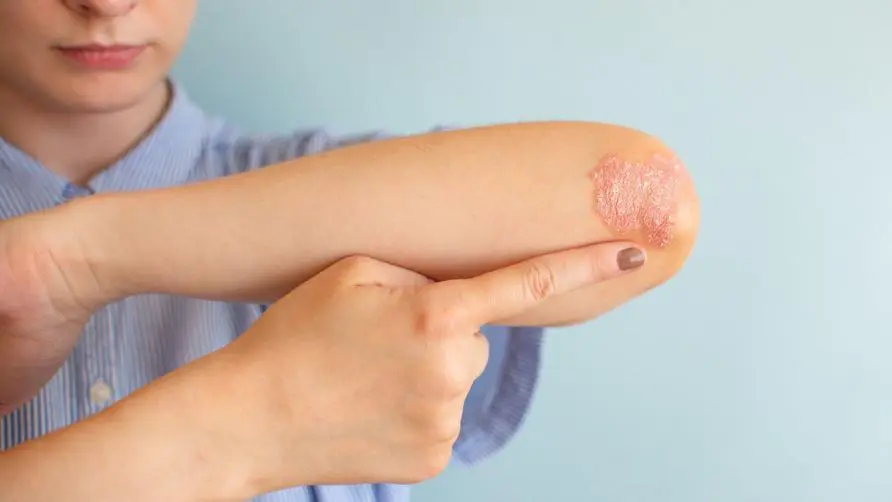Are hemangiomas related to heart and liver problems? Is it possible to leave "permanent scars" if your face is not treated? What treatments are available?

What are the common types of hemangiomas? Which age group is prone to hair loss?
The appearance of erythema of varying sizes on the face of a newborn baby may not be a rash, but a precursor to the onset of hemangioma? Dr. Yang Jingyi, Director of the Department of Dermatology, New Taipei City Tucheng Hospital, said in an exclusive interview that infantile hemangioma (commonly known as strawberry hemangioma) is more likely to occur in infants who have not been born for a long time. The overall prevalence rate in Taiwan is 1-3%, and it mostly occurs in early childhood. Newborns, female babies, underweight babies, older mothers, and multiparous women are also at certain risk.
In addition, in addition to the common granular erythema, hemangiomas also have flat “port wine stains” that are similar to skin bruising. They are a type of vascular birthmark that will become thicker with age.
Dr. Yang Jingyi further said that if granular erythema of different sizes appear on the skin of older adults, it is called “aging vascular nevus” (commonly known as cherry hemangioma). If the lesions are more numerous and widespread, it can usually be treated Related to skin aging or long-term liver problems.
Does hemangioma affect vision, hearing or even breathing? Is it related to heart and liver dysfunction?
What effects will excessive proliferation of hemangioma have on the body? Dr. Yang Jingyi explained that if the hemangioma grows rapidly and becomes “compressive”, if it presses on the “central axis” of the face, such as around the eyes, it will affect vision; if it presses on the ears, it will affect hearing; if it presses on the scalp, it will cause difficulty in hair growth; if it presses on the nose, it will even cause difficulty in hair growth. Will affect breathing. Ulcerative hemangiomas may even cause wounds that cannot heal. If the hemangioma on the face is larger than 1 cm, it is easy to leave scars in various parts, causing the appearance to be unsatisfactory.
Dr. Yang Jingyi pointed out that “segmental hemangioma” related to large-scale lesions on the face of newborns needs early treatment, otherwise it is easy to leave scars; it may even be combined with structural abnormalities of the heart or brain. In addition, for the above-mentioned adult aging vascular nevus, please note that if these vascular nevus show radiating blood streaks like “spider legs”, it may be a sign of liver cirrhosis. If patients are concerned about aesthetic problems, they can be improved through dye laser surgery.
What are the problems if hemangioma is not treated? What are the main treatments?
Dr. Yang Jingyi explained that hemangioma has no obvious lesions when a newborn is born. It will proliferate rapidly until the baby is 1-2 months old, reaching a peak at 4-5 months old, and will not enter the remission period until the baby is 9 months old. . If the initial proliferation is too rapid, vascular tissue or scars may remain on the face after the hemangioma subsides. For hemangiomas that regress naturally, 50% of patients will have appearance problems, especially on the central axis of the face and lips. Without proper treatment, up to 30% of patients will require surgical correction.
Dr. Yang Jingyi said that the current treatment methods for hemangioma are oral drugs, surgical resection or dye laser surgery. It is recommended that treatment be taken immediately to control the proliferation of hemangioma when he is 1 month old, and should not exceed 3 months of age. If it can be treated within 3 months of the golden period of treatment, good results can be achieved in most cases.
If patients over 2 years old have residual vascular filament lesions, it is recommended to use dye laser to remove erythema, vasodilation or vascular proliferation on the face, and use dye laser to absorb the red blood cells in the remaining vascular tissue. However, if there is remaining fibrous soft tissue, surgical correction is required.
Yang Jingyi reminded the public that the course of hemangiomas is unpredictable, and the lesions at the hyperplasia sites are also different. If a newborn is found to have obvious symptoms when it is 1-2 months old, it is recommended that parents take the child to a dermatology department immediately for treatment and follow up regularly to avoid facial scar problems as early as possible.
Further reading:
What is the difference between radio wave and sonic wave skin care? New technology that does both? Doctors urge you not to do “4 behaviors” after surgery





